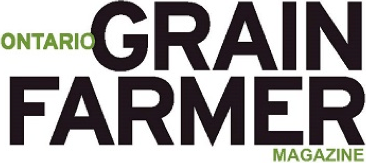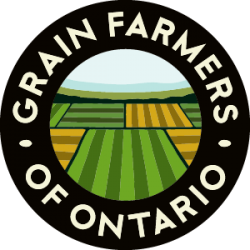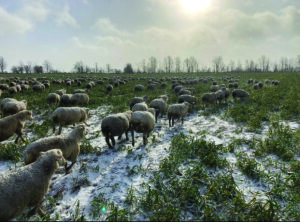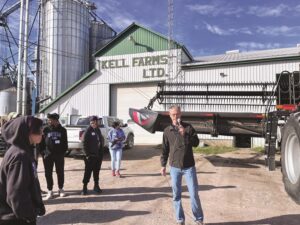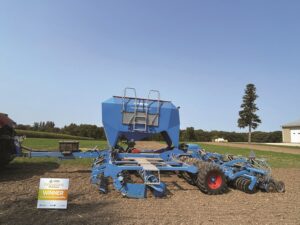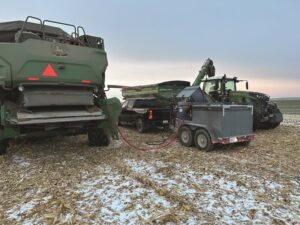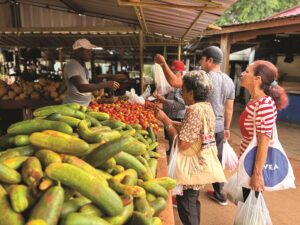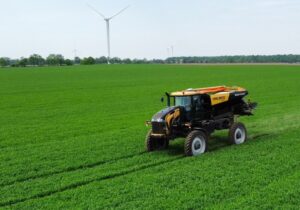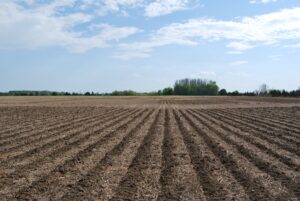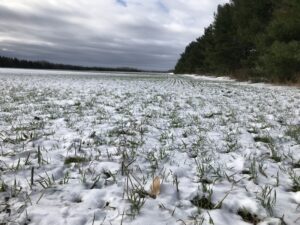Grain testing at elevators
Critical tips to maximize your profits
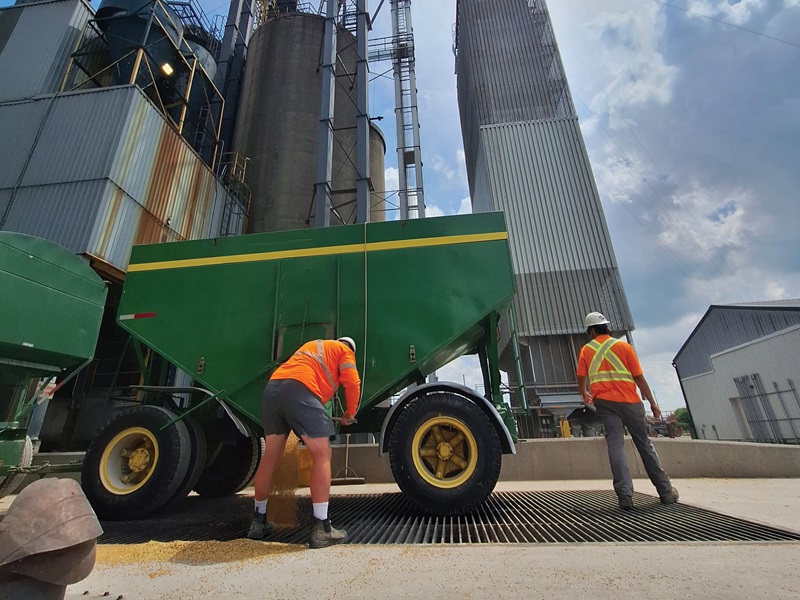
As with any quality control mechanism, grain testing at the elevators protects raw material providers (in this case, farmers), distributors (elevators), and end-users (millers, feed mills, and others).
The testing process ensures that farmers receive payment accurately for the grain quality they have worked hard to achieve, and it also enables elevators to ensure their feed and food customers consistently receive the quality they need, benefiting everyone in the value chain.
The Canadian Grain Commission has established grading process guidelines for every grain, including barley, corn, oats, soybeans, and wheat. These guidelines encompass acceptable testing equipment, the procedures for sampling and testing, and the methods for determining dockage. Grain Farmers of Ontario has hosted webinars in the past to help growers better understand the process. The more familiar farmers are with sampling, testing, and potential factors that can result in being docked, the less stress they will experience and the better they will be prepared to maximize profits.
From the elevator perspective, Devin Homick, grain origination and business development team lead at Chatham-based Great Lakes Grain (GLG), provides some history. When he started in the industry about 18 years ago, there were only standard tests at their locations, which include three co-ops with 27 elevators in southwestern Ontario and one in eastern Ontario, Embrun Co-op. These standard tests included physical test weight, dockage, visual inspection, and moisture content; however, the tests have expanded over the years to include glyphosate testing in Identity Preserved soybeans and additional measures.
“Having more information means we better understand what we’re holding at the elevator, and we can better manage our orders,” Homick explains. “We can better match the different qualities for different uses, we can blend in some cases, and make sure we mitigate risk for our farmers, for us and for our customers.”
Looking at other specific tests that have been added, the wet year of 2018 heralded serious worries about DON toxin in the corn crop. Discussion grew among Great Lakes Grain leadership about testing for it, and Homick says it quickly became very clear that it had to be done at all locations.
“We had to understand our risk, and we unfortunately had to place discounts on farmers that year,” he recalls. “But DON can be basically non-existent some years. Last year, there was almost nothing. I think the situation has improved a lot over time because there are better varieties, but the farmers are also definitely doing a better job at management, with fungicide and other practices. Farmers are also becoming very skilled in managing sclerotinia in soybeans. It’s great to see.”
Then, around 2021, falling number in wheat entered the spotlight. While it wasn’t (and still isn’t) a grade factor, Homick says customers didn’t want to handle wheat with lower numbers. “It’s been a hot topic since then about what to do,” he notes. “It’s a bigger issue for milling than for making feed, and low falling number is always a concern in a rainy growing season.” He adds that at the elevator level, any grading discount due to sprouting is typically determined immediately from visual inspection or test weight, but falling number tests can also be conducted. In Great Lakes Grain contracts, if the falling number is less than 250, it’s subject to rejection or discount.
HEADING OFF POTENTIAL DISPUTES
Before dropping off grains, Grain Farmers of Ontario encourages farmers to get a sample tested at their local elevator or with a third-party lab. A sample of at least two kilograms is recommended. This way, you have test results to compare to when testing (and grading) is done at the elevator.
If farmers don’t test ahead of time and disagree with the grade provided, they can also ask the elevator to perform a second test, by their staff or a third party. This is outlined in a Code of Practice for dispute resolution released in 2022, which Grain Farmers of Ontario developed in collaboration with the Ontario Agri Business Association (OABA) and the Ontario Canola Growers Association (Homick was on the Code development subcommittee). However, drawing on his experience and broader industry knowledge, Homick says that any issues are mostly handled at the branch level. “If there’s a grade or test weight dispute, part of the sample is sent to SGS or Canadian Grain Commission to get that second opinion,” he says, “but we try to manage any issues initially and come to an agreement.”
SAMPLING FOR DON
Homick reports that there has also been recent discussion in grain grading circles about how to achieve a more representative sample for DON conclusions in wheat and corn, to be as fair as possible to the grower. Mike Ondrejicka, owner of Ondrejicka Elevator in Exeter, with additional locations in Lucan and Centralia, and a member of the OABA subcommittee on grain grading, believes the primary factor preventing a more effective system for this is the intermittent nature of the toxin in corn. “We only see it one in four or five years, so we become complacent,” he says. “As producers, we lose focus on planting less susceptible varieties, and as elevators, we tend not to stay focused on improving our testing regime.”
To achieve a more accurate DON determination, lab analysis of a two-kilogram ground sample is recommended. “The toxin is not evenly distributed on every kernel,” Ondrejicka explains, “but tends to be highly concentrated on just a small percentage. So, the problem with using a small sample is that you could get a disproportionate amount of these high vomitoxin kernels.”
However, he adds that “research has clearly shown that using a much larger sample can give much more consistent and accurate results…but this is a challenge for current lab equipment [in terms of grinding], especially with high-moisture corn.” According to Ondrejicka, a Canadian company called Sasso Milling has designed and manufactured a machine that can easily handle the task. Due to the cost, most elevators do not yet have one, but adoption will likely ramp up in the years ahead.
MAXIMIZING PROFITS AT THE ELEVATOR
First, a look at canola. Jim Irvine, zone grain originator in the Barrie area at Minesing Elevator (owned by Great Lakes Grain, formerly Giffen Farms and Elevator), strongly encourages some farmers to adjust their screen settings.
“I’d like to remind canola growers that we clean the chaff, and when I see canola coming in that’s completely clean, and it happens quite a bit, we advise them to set their screens for less fine,” he says. “Completely clean canola arriving at the elevator means the farmer is losing quite a bit out the back of the combine, and we hate to see that. It’s such a valuable crop. We’ve handled canola for many years, and yes, the newer varieties are cleaner, but I don’t want farmers losing out, and that’s definitely happening in some cases. Not as many farmers are growing canola, but the ones who do are doing very well at it, with much better yields. It now has a longer season with harvest into September, and that’s not as ideal for getting winter wheat in after, but canola is definitely lucrative, and so please don’t reduce your profits by being afraid to take a little dockage with a bigger yield.”
In corn, Homick encourages growers to ensure their management of tar spot is top-notch. While it’s not generally tested for, Homick cautions that this disease can have a big impact on yield and test weight, which is caught at the elevator.
Moving on to wheat, Homick’s top tip is to harvest as soon as possible. “Farmers generally want the crop to dry down to 14 per cent, and I understand the urge, but we’ve seen time and time again, the first dry down is when the yield, test weight, falling numbers are at their best,” he explains. “We’d rather see the stems and straws are a touch green; you have the grain fill at that point, and you can trust me that if you go beyond that, you lose quality. I understand there’s a reluctance to pay the drying, as there are many years it’s dry when it comes off the field and during years when it’s not, paying for drying is not a welcome thought. But at the end of the day, the cost of drying will definitely be paid for in avoiding discounts down the road. I do think many more farmers are heeding this sound advice, and for the ones who aren’t, please think about it.” •
